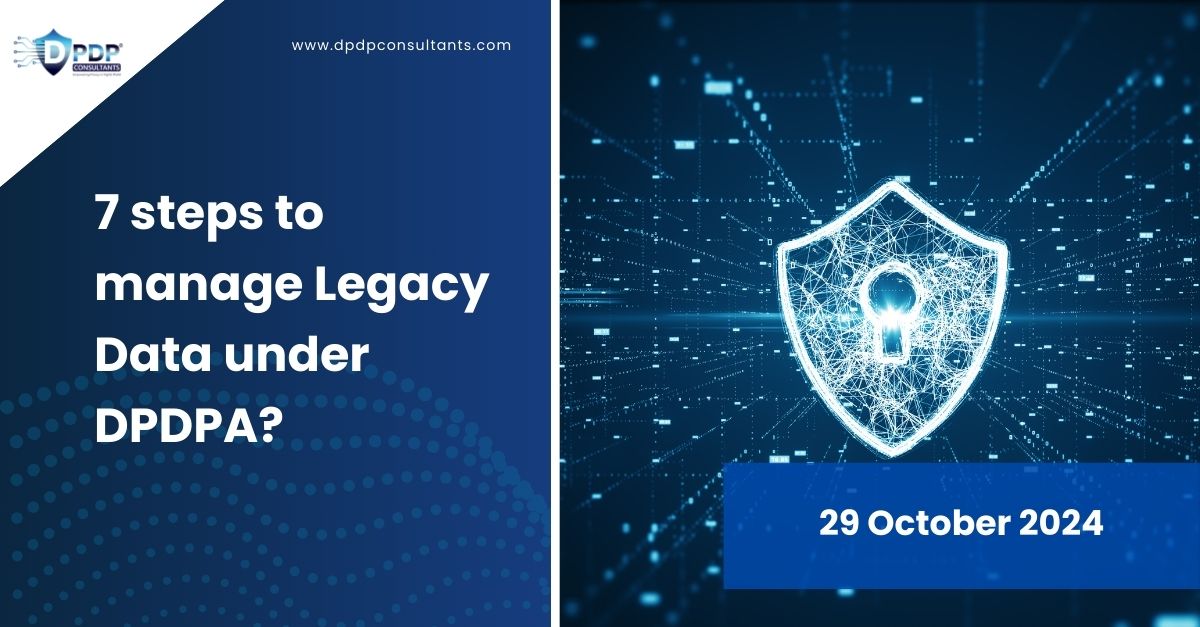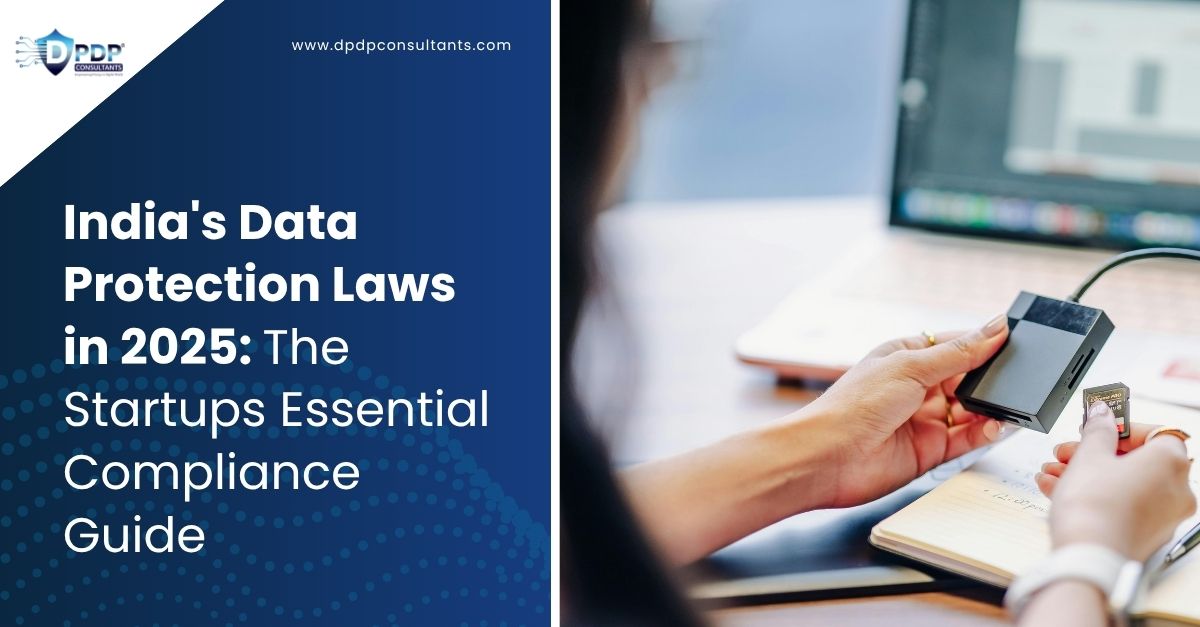Learn how to manage Data
Privacy in legacy systems with these 7 simple steps. Ensure your legacy data
remains secure and compliant with the DPDPA.
A sales team has kept a
lot of customer data in a spreadsheet for 10 years. After a security concern,
they now want to move this data into their sales systems.
The spreadsheet is a mess
– it’s not accurate, consistent, up-to-date, or well-organised. But it’s still
important data that they need to move, update processes, access, and use.
This is what we refer to
as Legacy Data, which can be tricky to handle and process, especially with the
Digital Personal Data Protection Act (DPDPA), 2023 now in effect. This blog
walks you through 7 steps to ensure data privacy in Legacy systems.
What is Legacy Data?
Legacy data is information
stored in old or outdated systems, formats, or technologies (called Legacy
Systems) that can be hard to get to. This data was made years ago and might not
be used by a company anymore. But it’s often important for legal, regulatory/compliance,
or historical reasons.
Examples of legacy data
include:
- customer records
- financial data
- Emails
- Documents
- Databases
- Dpreadsheets
- Presentations
- Data stored on old storage devices that are
not used much anymore
Importance of Managing Legacy Data
Managing legacy data is
crucial for several reasons:
- Compliance: Legacy data might be required to follow
specific regulations on how it’s stored, managed, protected, and deleted.
Not following these rules can lead to legal trouble, financial penalties
and business loss and can also harm your reputation.
- Better Data Management: Legacy data can give valuable insights for
business decisions, trends, and planning. Managing it well ensures it
stays useful even as technology changes.
- Improved Decision-making: Analysing legacy data helps understand past
business operations and improve future decisions. It can also reveal
patterns useful for product development, marketing, and more.
- Better Customer Service: Having access to past data helps provide
better service. For example, knowing a customer’s buying history can help
tailor products and services to their needs.
- Cost Savings: Properly managing legacy data helps avoid the
costs of maintaining outdated systems and tech. This includes hardware and
software maintenance, data migration, and legal compliance.
Even though it’s
important, managing old data can be tough. Your organisation might have lots of
sensitive data in outdated legacy systems, which could lead to data loss,
breaches, or compliance issues. But there are steps you can take to keep that
data safe and protect your organisation.
1. Ensure Regulatory Compliance
Lots of companies have to
follow legal regulations about how they handle and keep different types of
data, including legacy data. In India, the DPDPA sets out many obligations for
companies that collect, use, store or share personal data. In case of non-compliance,
they could face big fines, up to INR 250 crore.
You can use the DPDPA Readiness Review to see how the privacy law affects all parts of your
business.
2. Assess Data Privacy Risks
The next step is to look
at how your data privacy practices are functioning currently and find any weak
points. You can leverage DPDP Consultant’s DPDPA Compliance Assistance, to set up internal audit frameworks for
regulatory alignment.
3. Implement Data Privacy Principles.
Put data privacy
principles into action by following guidelines for collecting, processing,
storing, and sharing data. The DPDPA outlines principles like data
minimisation, purpose limitation, consent, accuracy, security, accountability,
and transparency.Serve Privacy notice to consented data Principals whose data
is stored by your legacy systems. Take consent if not already available. Honor
Data principals rights.
Use these principles to
create and enforce policies and procedures that respect the rights and
preferences of data principals. Make sure to document and share these policies
with your data subjects, stakeholders, and regulators.
4. Apply Data Privacy Techniques
Use data privacy
techniques to keep your data safe from unauthorised access, use, or disclosure.
Techniques like encryption, pseudonymisation, anonymisation, masking, and
tokenisation can help. These techniques change or hide your data so it’s still
useful but harder to identify or misuse. Make sure to check and review these
techniques regularly to make sure they work well. A Data Protection Impact Assessment (DPIA) tool helps with this process,
making it easier for Data Protection Officers (DPOs) to conduct DPIAs using a
user-friendly platform.
5. Adopt Data Privacy Tools
You can also use data
privacy tools to make your data privacy tasks easier by automating them. Tools
like data discovery, data classification, data governance, data lineage, and
data quality can help you find, organise, manage, track, and enhance your data
in your legacy system.
Data Principal Consent Management (DPCM) is one of the DPDPA tools that
helps in creating notices that align with the act’s provisions, ensuring your
processes remain clear and transparent.
An automated Data Principal Grievance Redressal (DPGR) tool enables data principals to
easily exercise their rights through a user-friendly platform and enables
requests to be accessed by Data Protection Officers or concerned persons
manually or automatically.
6. Update your Data Privacy Skills
Keeping your data privacy
skills up-to-date is important. The field is always changing, so it’s crucial
to stay on top of the latest trends, standards, and best practices. You can do
this by taking online courses, reading blogs and books, attending webinars and
conferences, and joining data privacy communities and networks.
An easier way to do this
is through the Data Protection Awareness Program (DPAP). It’s a subscription-based tool
that helps companies run regular and mandatory awareness sessions, followed by
assessments. This ensures that every employee understands the DPDPA and knows
what could happen if they don’t comply. The assessments make sure everyone
takes the program seriously, and the results are shared with all stakeholders.
7. Plan a Data Privacy Strategy
The last step is to plan
out your data privacy strategy and roadmap. Data privacy isn’t just a one-time
thing; it’s an ongoing process that needs regular checking, reviewing, and
enhancing.
To plan your strategy,
start by setting your data privacy goals, objectives, and metrics. Make sure
these align with your business and data engineering goals. Then, prioritise
your data privacy projects, assign your resources, and keep track of your progress
and results.
Overcoming the Challenge
of Legacy Data
Dealing with legacy data
can be tough for many organisations. The challenges can vary depending on the
organisation and where they are located. To tackle these challenges, companies
might need to invest in special tools and know-how to handle legacy data well.
One way to get this
expertise is by partnering with DPDP Consultants.
Our team of experts know
all about data protection and privacy rules and can help you build compliance
and get valid consent for all your customers’ and stakeholders’ personal data.
Our tailored solutions
equip your organisation with the necessary skills, tools, and know-how to
efficiently adhere to these regulations and manage legacy data effectively. We
ensure the ongoing accessibility, accuracy, and security of your data. Moreover,
we uncover valuable insights within this data to fuel your business growth.
Additionally, our team can help you with strategies to migrate legacy data to
more user-friendly systems.
Legacy Data Is a Big Problem. Let us Help You!
Looking for expert advice from top consultants?
Whether you need guidance on legal compliance
consulting or tool-based technical solutions, DPDP Consultants can help
you with the best professional services in the industry. Get tailored insights
and practical solutions to help you succeed.
For News updates, expert insights, and practical
tips on DPDP compliance and personal data security please subscribe to our
newsletter Privacy Talks.





